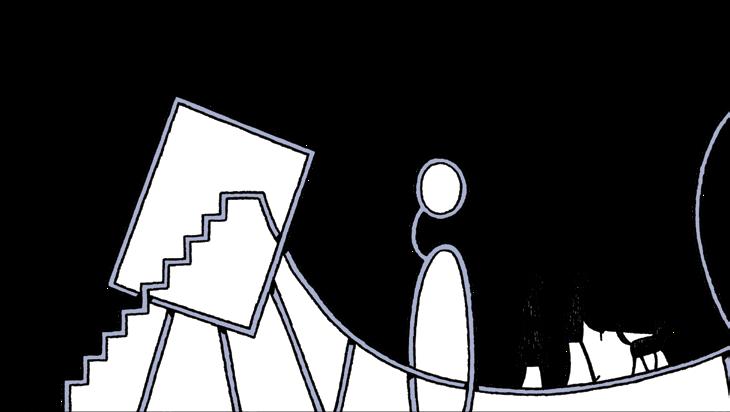
5 minute read
William Morris, Renaissance
William Morris was a neurotic ball of energy, obsessed with the design of wallpaper, books, kitchens and fields. By Fiona MacCarthy
The Victorian Renaissance Man
Advertisement
William Morris was many kinds of man: visual artist, poet, political activist, and Marxist theoretician.
He was also many kinds of designer. Morris designed numerous, special one-off objects that he either made himself, the design often evolving through the processes of making, or collaborated on with his craftworkers and friends.
Morris designed for one-off and small-batch production in his early workshops and for relatively large-scale production runs in later days at his factory at Merton Abbey. To an extent that few people are aware of, he designed other products to be made by subcontractors and sold through his firm’s showrooms. He acted as designer–buyer for his shops in the sense of searching out and commissioning new ranges to be sold alongside Morris, Marshall, Faulkner & Co’s own products.
On a visit to Italy, his travelling companion Edward Burne-Jones complained about Morris’s obsessive ‘merchandising for the firm’. As chief designer and overall controller of the firm’s visual and technical standards, Morris covered a stupendous range.
In his neurotically energetic lifetime, his interests and technical knowledge burgeoned outwards to include embroidery, furniture, stained glass, wallpapers and mural decorations; wood engravings, illumination and calligraphy; printed and woven textiles, and high-warp tapestry.
At the end of his life, there was the final challenge of book design and type design at his own Kelmscott Press.
William Morris saw things whole. His view of design was rich, complex and dominated by his reverence for buildings as repositories of history and keepers of the soul. The point of Morris’s acutely detailed knowledge of individual processes and products was his passion for the total architectural mise-en-scène. He liked the completeness of designing for a church or domestic interior. He was as interested in gardens as in houses and, as we see at his own Red House, Morris had great feeling for interflowing spaces.
His generous concept of the role of the designer would eventually lead him to envisage whole communities, networks of productive and sociable, semi-selfsufficient, small country towns, precursors of the early-twentieth-century garden cities.
As he expounded so sturdily in a lecture, Art under Plutocracy (1883), his view of art encompassed what we would now think of as total environmental planning: design for ‘all the externals of our life’.
Morris argued that art was not merely a matter of painting and sculpture, architecture and ‘the shapes and colours of all household goods’. It also took in ‘the arrangement of the fields for tillage and pasture, the management of towns and of our highways of all kinds’.
He saw visual alertness as a basic human function, and the shared appreciation of beauty and design in everyday surroundings and ordinary objects as the means of reconciling the artist with society.
In his Utopian novel, News from Nowhere, art has become so deeply embedded in the life of the community of Morris’s new England that it has no name.
Morris’s strengths as a designer spring from the exactness of his observation. Even when he was a child exploring gentle, quirky rural Essex, and on his later expeditions as a disaffected schoolboy into the countryside around Marlborough College, his sense of landscape was almost uncannily acute.
In a letter written after Morris’s death, his daughter Jenny commented on his facility for grasping the essentials: ‘In half a dozen words, Father could make one see a place exactly.’
The details of known landscapes stayed in his mind for ever and he drew on what became almost a library of
William Morris (1834-96) in working smock. Unknown photographer, c 1876

Above: Brother Rabbit printed cotton, by Morris, 1880-81. Below: his design for bluebell or columbine printed cotton, 1876
riverscapes and tree forms, flowers, fruits and the little living creatures of the meadows and the woodlands: starlings squawking, robins hopping, kingfishers swooping, sleek and amiable rabbits. They recur in his design work as vividly as they do in his poetry and prose.
Morris was often caustic about the vapid, fashionable decorative designs of his contemporaries, citing Lawrence Alma-Tadema’s with particular venom: ‘They appear to me too much made up of goose giblets and umbrellas.’
His own idea of pattern embraced memory and nature, a theme he followed through in his 1881 lecture Some Hints on Pattern-Designing. Morris’s ideal pattern held ‘unmistakable suggestions of gardens and fields’. He reached out for solidity: the real and unmistakable.
Again, back in his childhood, he glorified the tactile, clinging to a rag at bedtime, recalling with precision a picture of Abraham and Isaac worked in worsted, a carved ivory junk with painted, gilded puppet figures, and a particular Dutch toy town spread out satisfactorily on the floor.
Gradually, as a designer and a design theorist, he evolved a whole philosophy of things, arguing the strengths of well-printed books, splendid tapestries and beautiful and functional kitchens as a bulwark against social alienation and decay.
What is fascinating is the scope of his intelligence. His great originality, a facet of his genius, is the way that Morris moves, apparently without selfconsciousness, between the solid, ‘manly’ worlds of furniture and buildings and the soft, traditionally female textile crafts.
Reminiscing in the 1890s, Morris’s friend and chief collaborator, Edward Burne-Jones, summed up his career with exasperated fondness:
‘When I first knew Morris, nothing would content him but being a monk, and getting to Rome, and then he must be an architect, and apprenticed himself to Street, and worked for two years, but when I came to London and began to paint, he threw it all up, and must paint too, and then he must give it up and make poems, and then he must give it up and make window-hangings and pretty things, and when he had achieved that, he must be a poet again, and then after two or three years of Earthly Paradise time, he must learn dyeing, and lived in a vat, and learned weaving, and knew all about looms, and then made more books, and learned tapestry, and then wanted to smash everything up and begin the world anew, and now it is printing he cares for, and to make wonderful rich-looking books and all things he does splendidly – and if he lives the printing will have an end – but not I hope, before Chaucer and the Morte d’Arthur are done; and then he’ll do I don’t know what, but every minute will be alive.’

This is an extract from an essay by the late Fiona MacCarthy (1940-2020) in William Morris, ed. Anna Mason, (Thames & Hudson, £50), out in August









